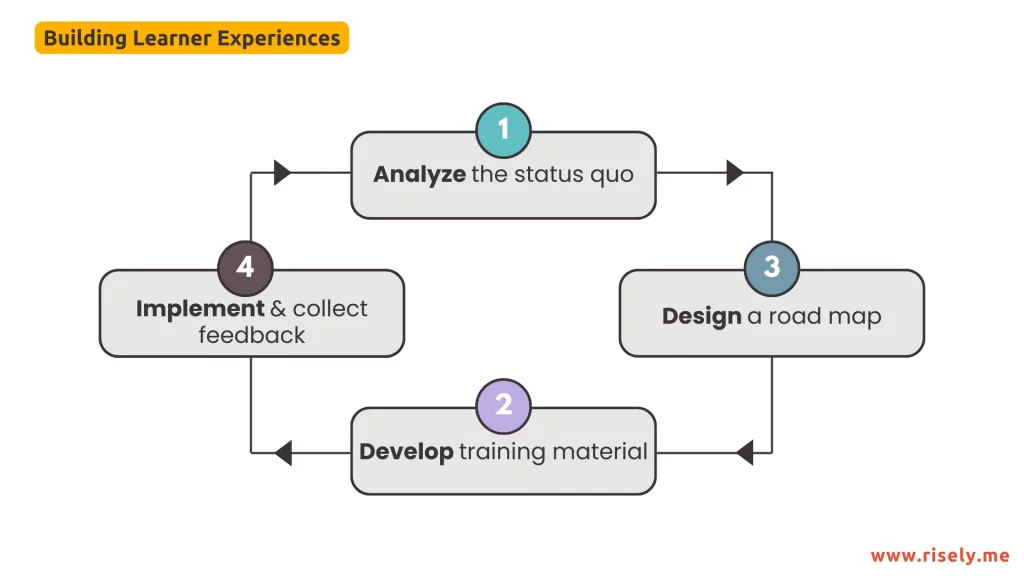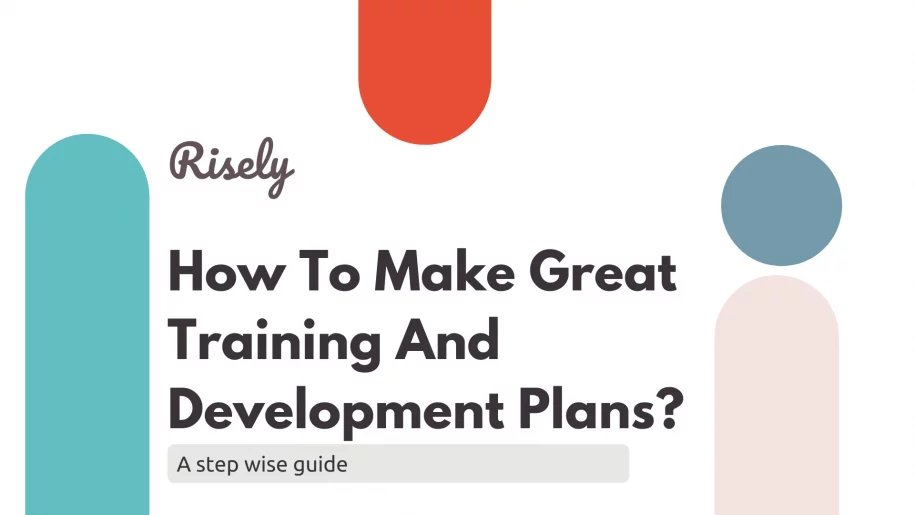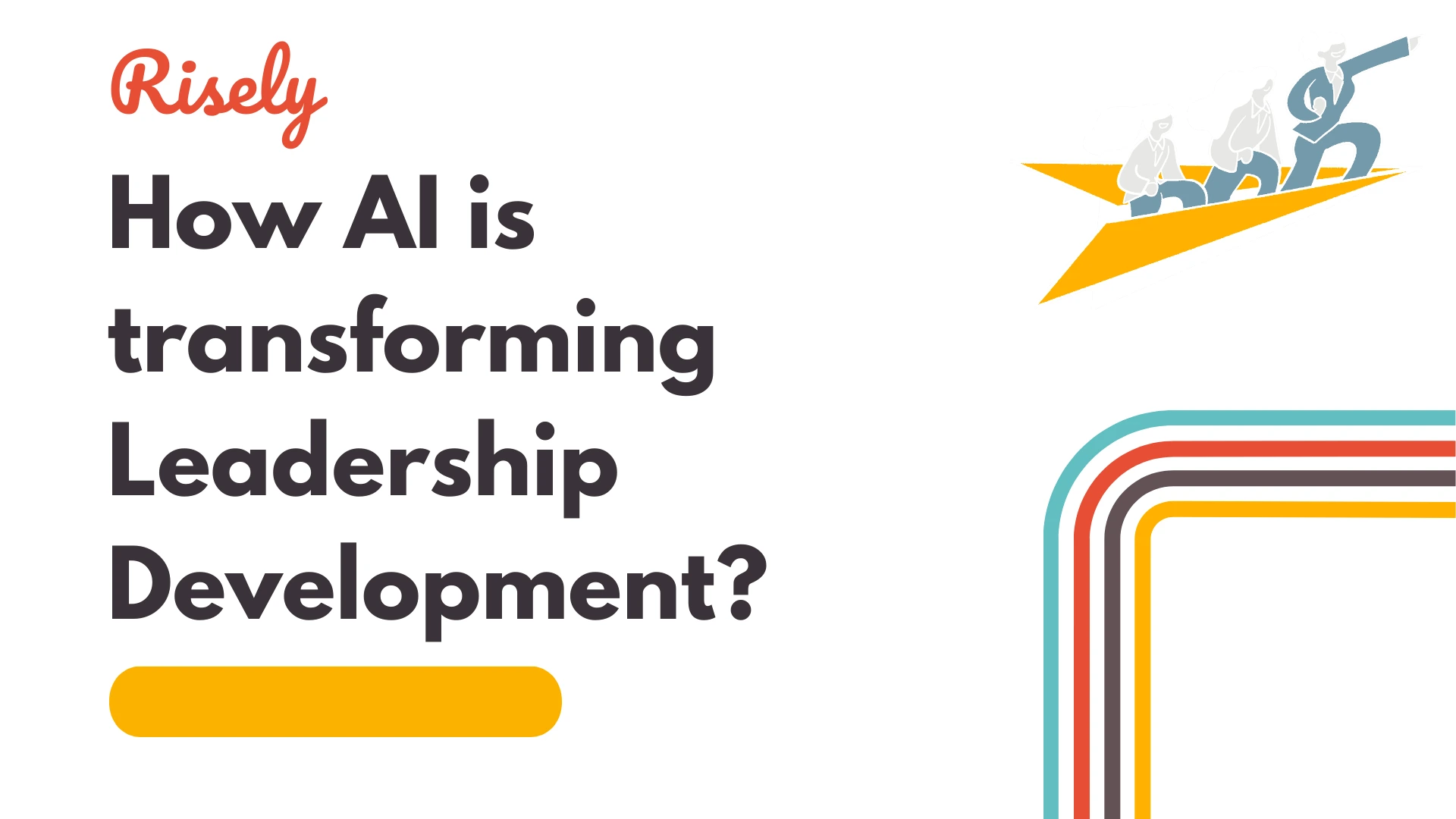How To Make Great Training And Development Plans (Free Template)
Training and development plans are the backbone of a successful L&D function. They are important for helping your employees grow and reach company goals. This blog post is a complete guide on understanding, creating, and implementing effective training and development plans along with a free template. These plans will help your team members and company achieve business goals in the best ways possible.What are training and development plans?
Training programs are special efforts made to help employees learn the skills or knowledge they need for their jobs. They are like quick boosts for better performance. An employee development plan is different. It focuses on the long-term and looks at future growth. A good employee development plan takes into account current skills and future job roles. It aims to close the skills gap and get employees ready for career growth in your company. This plan might include on-the-job training, mentoring, coaching, and formal education programs to suit your needs.What’s the difference between training and development?
Training helps people do their current jobs better by teaching specific skills. It focuses on what is needed right now. For instance, teaching a new customer service worker how to use your company’s software is training. On the other hand, development looks at the bigger picture. It is about growing professionally and advancing over time. This means giving employees the tools and knowledge they need to move up in the company and take on new challenges.🔗 Grab the free template here: Free Download Training and Development Plan Template
Why training and development is important?
Training and development plans are not just static documents; due to their many advantages, they are critical pillars for a successful L&D function.- Alignment with strategic goals: Training and development plans are the pivot for executing most of your efforts. A solid training and development plan ensures alignment with your company’s strategic goals and further supports efforts in prioritizing various learning initiatives for your team. Ultimately, it helps demonstrate the impact of your L&D strategy due to a clear connection with business outcomes.
- Optimal resource allocation and usage: That’s the best part of any plan ever! A great training and development plan will help you figure out the best ways to combine limited resources for maximum impact. It ensures that your budgets are utilized well, the personnel and resources are efficiently used, and there is minimal wastage.
- Quality control on training: Planning helps your L&D function create standardized features and practices across the organization, which makes learning easier to access and absorb for everyone. Consistent learning experiences also ensure that you are upgrading and evolving opportunities available to employees regularly and meeting their needs.
- Easy measurement and tracking of ROI: Setting up a training and development plan also calls for benchmarking against internal and competitive standards so that you can easily measure changes and progress in your team’s skill profiles. It also helps in improving the programs based on feedback collected. Additionally, as you define and track several metrics throughout the implementation, you generate substantial data points to demonstrate the L&D team’s impact on business outcomes.
- Meeting employee needs: Employee satisfaction and low turnover rates are directly connected to the professional growth opportunities provided by their workplaces. Training and development plans are a key step in this as they add clear learning and development pathways to fulfill the needs of the employees and ensure that they have structured development routes.
How to create the best training and development plans for your team?
Some L&D housekeeping:
Before you start your training program, get the needed resources. This means getting budget approval, picking the right training materials, and finding trainers inside or outside your company. Setting clear objectives is very important. Rather than saying something vague like “improve communication,” make specific goals like “increase active listening skills by 20% based on post-training assessments.” Always keep in mind that training should not be the same for everyone. Think about each employee’s needs, their professional goals, and how they learn best. It is important to link training with the larger goals of the company, but individual needs are also key. Talk with your team members about their career goals. How can the training program help them grow in their professional development and improve their career path? Creating personalized learning paths will help them engage more and remember what they learned.Bring your L&D strategy into focus
- Start by stating your company’s business goals. What do you want to achieve in the next year? What are your goals for the next five years? You should look at your place in the market, find chances for growth, and set clear goals to improve or expand.
- Next, change these business goals into real needs for your organization. For example, if your plan is to move into a new market, you will need workers who understand that market and can handle different cultures.
- If your company has a strategic document, use it. This document should show your mission, vision, and long-term goals. It can help you figure out the skills and knowledge you need to reach those goals.

Step 1: Assess the current skills and competencies
A complete skills gap analysis looks at the skills your current workforce has. You compare these skills to the ones needed to meet your organizational goals. You can do this in different ways, such as using skills assessments, performance reviews, and surveys. Next, look at what each employee needs for development. Have you gotten feedback about certain skill gaps? Are there specific skills your team members want to improve? Start by defining the perfect skill set for each job in your organization. Then, check each employee or team to see if they have these skills and how well they meet them. Don’t forget to look at both technical skills, like software skills, and soft skills, like communication and problem-solving. Find areas where training and development programs can help close the skills gap. Focus first on gaps that will greatly affect how your organization can meet its goals. Keep in mind that employee development is not only about fixing current gaps. It is also about getting your workforce ready for the future. Think about new trends in the industry. Anticipate the skills your company may need in the years ahead.Step 2: Define training goals
Once you know what training you need, turn those ideas into clear learning goals. Think about what skills or knowledge employees should learn from the program. Also, consider how this new knowledge can help them work better towards the company’s goals. Learning goals should meet the SMART criteria: specific, measurable, achievable, relevant, and time-bound. This method makes things clear, helps set goals for success, and allows for good evaluation. Make sure to connect both company-wide goals and individual goals. This means that training goals should match the company’s plans and the employee’s career goals. That way, everyone benefits.Step 3: Design training content
Now it’s time to make your training program fun and useful by creating interesting content. You might need to make presentations, pick case studies, design interactive activities, or find outside resources. Think about different learning styles to keep everyone engaged. Some people learn better with visuals. Others do well with hands-on activities. By using varied content, you can keep training exciting. This also supports a culture of learning in your organization. The main goal is to give employees practical skills and knowledge they can use in their jobs. Good training helps them perform better, boosts their confidence, and improves job satisfaction. All of this leads to a better work environment.Step 4: Implement the training and development plan
The implementation phase is where we put theory into practice. Prepare your trainers with the right resources. Clearly tell participants what to expect, and make sure logistics go smoothly. Training often includes change management. Employees may need to adjust to new processes or software. They will need ongoing support and encouragement. Keep clear channels open for communication and feedback during the program. Check on employee’s progress often to make sure they understand the material and meet the learning goals. This might involve quizzes, assignments, or just watching how they use new skills in their daily work.Step 5: Evaluate the training and development plan
After the training is done, it is important to check its effect. Did the program meet its goals? Did people’s performance get better? Getting feedback from both the participants and their managers is key to knowing if it was successful. Use a clear method to collect feedback. This can be through surveys, tests after the training, or personal interviews. The aim is to see what worked well and find ways to make the program better next time.Training and development plan example (with free template)
Let’s see a training and development plan in action with this example: We will start with the professional objective and it’s priority, further break it down into key skills that the employee needs and define actionable steps on those lines.Goal: Transition from Senior Developer to Technical Lead within 12 months
Priority: High – Critical for team growth and succession planningSkill Gap Analysis
| Skill Name | Current Level | Expected Level | Skill Gap |
|---|---|---|---|
| Technical Architecture Design | 6 | 8 | 2 |
| Team Leadership | 5 | 8 | 3 |
| Stakeholder Management | 4 | 7 | 3 |
| Skill Area | Weekly Goal | Monthly Goal | Quarterly Goal |
|---|---|---|---|
| Technical Architecture Design | Review one system architecture pattern | Complete one advanced architecture course | Get cloud architecture certification |
| Document current system architecture decisions | Lead one architecture review meeting | Design and present one major system enhancement | |
| Practice system design exercises (1 hour) | Create proposal for system improvements | Mentor two junior developers on architecture principles |
Progress Tracking
- Weekly self-assessment
- Monthly review with mentor
- Quarterly evaluation with manager
Success Metrics
- Architecture: Successfully implement two major system improvements
- Leadership: Achieve 80% team satisfaction score
- Stakeholder: Receive positive feedback from 3 key stakeholders
🔗 Grab the free template here: Free Download Training and Development Plan Template
Training and development best practices for 2025
Training and development have existed for centuries, but recent years have brought some upheavals, especially with AI taking a lot from our plates and increasing needs for digital literacy among employees across the organization. What best practices of training and development should you keep in mind to make your ideas fail-proof? Let’s explore.#1 Focus on alignment between the individual and the organization
A focus on alignment with your organization’s strategic objectives is more important than ever. L&D budgets were never in a free-flow state, but the post-COVID years saw some fall backs and cut down on innovation in favour of easier, in-house methods of training, which put less burden on the pocket. Impact then becomes critical to ensuring that the C-suite sees your work and understands how crucial your role is in keeping things moving forward. It means focusing on not just building and executing plans but also picking the right metrics that matter to the business’s success and resonate with your stakeholders, including the executives and the employees attending the training and development programs. Think of key impacts that you can bring to the table, such as a competitive edge in a new technological area, a better learning-focused employer brand, or positive employee advocacy, and use your best efforts to communicate them everywhere. Read more: Think Of These 4 Trends In Your Corporate Learning Strategy#2 Leverage tech and AI smartly
Everyone wants an AI in their flow of work, but let’s be honest: most people are not sure of what, why, and how it fits in with the existing network of learning and development opportunities around them. Before heading out and planning training and development initiatives for 2025, look for areas where AI can help. These are places where you need personalization or areas where you need to automate manual actions happening repeatedly. For instance, in leadership development, many companies see value in coaching and microlearning, and about 47% are set to do more with the help of AI. In such use cases, Risely’s AI coach Merlin can help increase access to coaching for people managers in your company who are often left out of expensive leadership training programs. Similarly, Harvard Business Online highlighted that organizations want more leaders to be ready to tackle challenges; it’s no longer just about the C-suite. We all know how expensive this can be. But we have AI! It can bring personalization, scale, and flexibility at the level you need to reach more people through training and development initiatives. Read more: 3 Reasons Why Your Digital Learning Strategy Fails#3 Design with a focus on ROI
How many companies reach the measurement stage with their learning and development programs? As per a LinkedIn study, this number stood at about 5%. Most organizations, if not all, are unable to make the most of their training and development programs because of either one:- Their measurement was not in-depth, or it was not standardized.
- They picked metrics to track that did not align with strategic goals.
- They could not conduct both pre and post-assessments during the training cycle.
- Converting the data into insights was difficult.
Wrapping Up
In conclusion, creating good training and development plans is important for growth in organizations and success for employees. First, identify goals and check skills. Then, set clear objectives to make a path for ongoing learning and improvement. Use new ideas like technology and soft skills development. Avoid mistakes such as unclear goals and not following up. Update your plans often to keep them useful and effective. Use the template given to make your training easier. This will help your team achieve their best. Begin making your own training and development plans today for a more skilled and motivated team.Get Started with the Free Training and Development Plan Template!
Grab free L&D resources and more for holistic growth of people managers.
Only on Risely.
AI and Leadership Development: Driving Synergy for Growth
AI and Leadership Development: Driving Synergy for Growth You know the frustration all too well. Your organization invests thousands in…
How Are AI Learning Platforms Transforming Leadership Development?
How Are AI Learning Platforms Transforming Leadership Development? As an L&D leader, you’re likely familiar with this frustrating reality: 82%…
5 Essential AI Skills for L&D Leaders
5 Essential AI Skills for L&D Leaders According to LinkedIn’s 2025 Workplace Learning Report(1), 71% of L&D professionals are now…
How to Create a Course with AI: A Guide for L&D Professionals
How to Create a Course with AI: A Guide for L&D Professionals According to a McKinsey survey(1), only 11% of…
Building an Ultimate Leadership Development Action Plan
How to Build a Leadership Development Action Plan? Having a strong Leadership Development Action Plan is more critical than ever…


